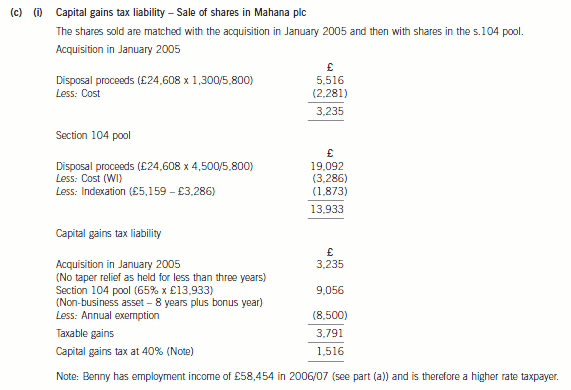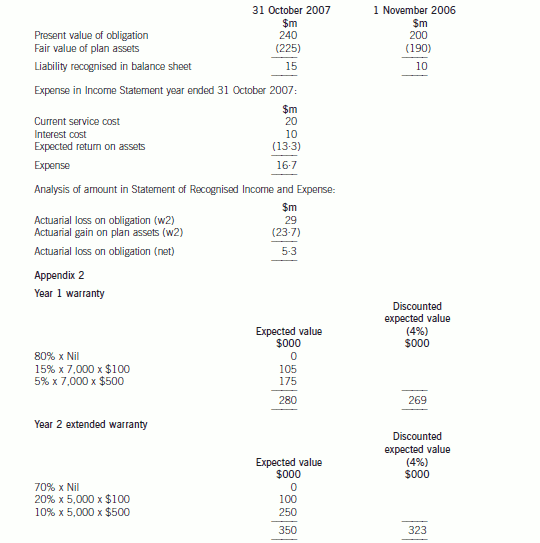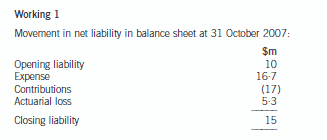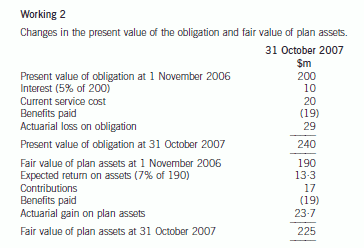甘肃省ACCA考试真题下载步骤是怎么样的?
发布时间:2020-01-10
时光飞逝,刚来的2020年就快要过去半个月了,各位备考ACCA的同学们复习的怎么样了呢?目前,很多备考的同学来问51题库考试学习网:ACCA考试的真题在哪里下载?下载的步骤又是怎么样的呢?别担心,这些问题今天51题库考试学习网为大家通通解决,这份“真题下载宝典”请收入囊中:
首先为大家说一下真题在哪里下载,真题的下载通常有两种途径:
1.在百度上搜索ACCA真题,会有各大网校为大家已经准备好了的历年的真题,只需点击下载即可,这个方法是最常见也是最为简单的。
2.如果说一些同学不放心在网校机构的官网下载的话,也可以选择去ACCA官网,www.accaglobal.com下载最新的真题。这种途径的优点在于相比较第一种网校下载的真题而言更加有权威性和可信度,且能拿到一手的真题信息,对自己的备考复习会有更大的帮助。
(一些萌新不知道如何在ACCA官网下载真题?请跟随51题库考试学习网一起,了解更多官网下载步骤)
(1)登录www.accaglobal.com
(2)到页面最下方点击“past exam papers”

(3)可以根据需要选择相应的文件

举例:在exam下选择F5,在Resource type下选择“past exam papers”接着下方图表里就是F5的真题了

此外,在Resource type里还有其他的资料(如下图)大家可以根据自己的需要选择下载

以上就是关于真题下载的相关资讯,望大家采纳。
最后,51题库考试学习网想对大家说:“心在浩瀚时空可以替换成心怀天下,心怀梦想,心在追求真理的浩瀚时空。”各位备考ACCA的同学们,加油,成功在向你们招手~
下面小编为大家准备了 ACCA考试 的相关考题,供大家学习参考。
3 You are the manager responsible for the audit of Seymour Co. The company offers information, proprietary foods and
medical innovations designed to improve the quality of life. (Proprietary foods are marketed under and protected by
registered names.) The draft consolidated financial statements for the year ended 30 September 2006 show revenue
of $74·4 million (2005 – $69·2 million), profit before taxation of $13·2 million (2005 – $15·8 million) and total
assets of $53·3 million (2005 – $40·5 million).
The following issues arising during the final audit have been noted on a schedule of points for your attention:
(a) In 2001, Seymour had been awarded a 20-year patent on a new drug, Tournose, that was also approved for
food use. The drug had been developed at a cost of $4 million which is being amortised over the life of the
patent. The patent cost $11,600. In September 2006 a competitor announced the successful completion of
preliminary trials on an alternative drug with the same beneficial properties as Tournose. The alternative drug is
expected to be readily available in two years time. (7 marks)
Required:
For each of the above issues:
(i) comment on the matters that you should consider; and
(ii) state the audit evidence that you should expect to find,
in undertaking your review of the audit working papers and financial statements of Seymour Co for the year ended
30 September 2006.
NOTE: The mark allocation is shown against each of the three issues.

■ A change in the estimated useful life should be accounted for as a change in accounting estimate in accordance
with IAS 8 Accounting Policies, Changes in Accounting Estimates and Errors. For example, if the development
costs have little, if any, useful life after the introduction of the alternative drug (‘worst case’ scenario), the carrying
value ($3 million) should be written off over the current and remaining years, i.e. $1 million p.a. The increase in
amortisation/decrease in carrying value ($800,000) is material to PBT (6%) and total assets (1·5%).
■ Similarly a change in the expected pattern of consumption of the future economic benefits should be accounted for
as a change in accounting estimate (IAS 8). For example, it may be that the useful life is still to 2020 but that
the economic benefits may reduce significantly in two years time.
■ After adjusting the carrying amount to take account of the change in accounting estimate(s) management should
have tested it for impairment and any impairment loss recognised in profit or loss.
(ii) Audit evidence
■ $3 million carrying amount of development costs brought forward agreed to prior year working papers and financial
statements.
■ A copy of the press release announcing the competitor’s alternative drug.
■ Management’s projections of future cashflows from Tournose-related sales as evidence of the useful life of the
development costs and pattern of consumption.
■ Reperformance of management’s impairment test on the development costs: Recalculation of management’s
calculation of the carrying amount after revising estimates of useful life and/or consumption of benefits compared
with management’s calculation of value in use.
■ Sensitivity analysis on management’s key assumptions (e.g. estimates of useful life, discount rate).
■ Written management representation on the key assumptions concerning the future that have a significant risk of
causing material adjustment to the carrying amount of the development costs. (These assumptions should be
disclosed in accordance with IAS 1 Presentation of Financial Statements.)
(c) (i) Calculate Benny’s capital gains tax liability for 2006/07. (6 marks)

(b) (i) Discusses the principles involved in accounting for claims made under the above warranty provision.
(6 marks)
(ii) Shows the accounting treatment for the above warranty provision under IAS37 ‘Provisions, Contingent
Liabilities and Contingent Assets’ for the year ended 31 October 2007. (3 marks)
Appropriateness of the format and presentation of the report and communication of advice. (2 marks)
(b) Provisions – IAS37
An entity must recognise a provision under IAS37 if, and only if:
(a) a present obligation (legal or constructive) has arisen as a result of a past event (the obligating event)
(b) it is probable (‘more likely than not’), that an outflow of resources embodying economic benefits will be required to settle
the obligation
(c) the amount can be estimated reliably
An obligating event is an event that creates a legal or constructive obligation and, therefore, results in an enterprise having
no realistic alternative but to settle the obligation. A constructive obligation arises if past practice creates a valid expectation
on the part of a third party. If it is more likely than not that no present obligation exists, the enterprise should disclose a
contingent liability, unless the possibility of an outflow of resources is remote.
The amount recognised as a provision should be the best estimate of the expenditure required to settle the present obligation
at the balance sheet date, that is, the amount that an enterprise would rationally pay to settle the obligation at the balance
sheet date or to transfer it to a third party. This means provisions for large populations of events such as warranties, are
measured at a probability weighted expected value. In reaching its best estimate, the entity should take into account the risks
and uncertainties that surround the underlying events.
Expected cash outflows should be discounted to their present values, where the effect of the time value of money is material
using a risk adjusted rate (it should not reflect risks for which future cash flows have been adjusted). If some or all of the
expenditure required to settle a provision is expected to be reimbursed by another party, the reimbursement should be
recognised as a separate asset when, and only when, it is virtually certain that reimbursement will be received if the entity
settles the obligation. The amount recognised should not exceed the amount of the provision. In measuring a provision future
events should be considered. The provision for the warranty claim will be determined by using the expected value method.
The past event which causes the obligation is the initial sale of the product with the warranty given at that time. It would be
appropriate for the company to make a provision for the Year 1 warranty of $280,000 and Year 2 warranty of $350,000,
which represents the best estimate of the obligation (see Appendix 2). Only if the insurance company have validated the
counter claim will Macaljoy be able to recognise the asset and income. Recovery has to be virtually certain. If it is virtually
certain, then Macaljoy may be able to recognise the asset. Generally contingent assets are never recognised, but disclosed
where an inflow of economic benefits is probable.
The company could discount the provision if it was considered that the time value of money was material. The majority of
provisions will reverse in the short term (within two years) and, therefore, the effects of discounting are likely to be immaterial.
In this case, using the risk adjusted rate (IAS37), the provision would be reduced to $269,000 in Year 1 and $323,000 in
Year 2. The company will have to determine whether this is material.
Appendix 1
The accounting for the defined benefit plan is as follows:



3 Better budgeting in recent years may have been seen as a movement from ‘incremental budgeting’ to alternative
budgeting approaches.
However, academic studies (e.g. Beyond Budgeting – Hope & Fraser) argue that the annual budget model may be
seen as (i) having a number of inherent weaknesses and (ii) acting as a barrier to the effective implementation of
alternative models for use in the accomplishment of strategic change.
Required:
(a) Identify and comment on FIVE inherent weaknesses of the annual budget model irrespective of the budgeting
approach that is applied. (8 marks)
(a) The weaknesses of traditional budgeting processes include the following:
– many commentators, including Hope and Fraser, contend that budgets prepared under traditional processes add little
value and require far too much valuable management time which would be better spent elsewhere.
– too heavy a reliance on the ‘agreed’ budget has an adverse impact on management behaviour which can become
dysfunctional having regard to the objectives of the organisation as a whole.
– the use of budgeting as base for communicating corporate goals, setting objectives, continuous improvement, etc is seen
as contrary to the original purpose of budgeting as a financial control mechanism.
– most budgets are not based on a rational causal model of resource consumption but are often the result of protracted
internal bargaining processes.
– conformance to budget is not seen as compatible with a drive towards continuous improvement.
– budgeting has an insufficient external focus.
声明:本文内容由互联网用户自发贡献自行上传,本网站不拥有所有权,未作人工编辑处理,也不承担相关法律责任。如果您发现有涉嫌版权的内容,欢迎发送邮件至:contact@51tk.com 进行举报,并提供相关证据,工作人员会在5个工作日内联系你,一经查实,本站将立刻删除涉嫌侵权内容。
- 2020-01-10
- 2020-03-27
- 2020-05-18
- 2020-01-09
- 2020-05-09
- 2020-02-20
- 2020-03-11
- 2020-01-10
- 2020-04-16
- 2020-03-13
- 2020-01-10
- 2020-01-10
- 2020-02-05
- 2020-01-11
- 2020-04-28
- 2020-05-10
- 2021-04-17
- 2020-04-17
- 2020-05-10
- 2020-04-08
- 2020-01-10
- 2019-01-09
- 2020-04-02
- 2020-01-14
- 2020-01-10
- 2020-03-07
- 2020-01-10
- 2020-01-30
- 2020-01-10
- 2020-03-27